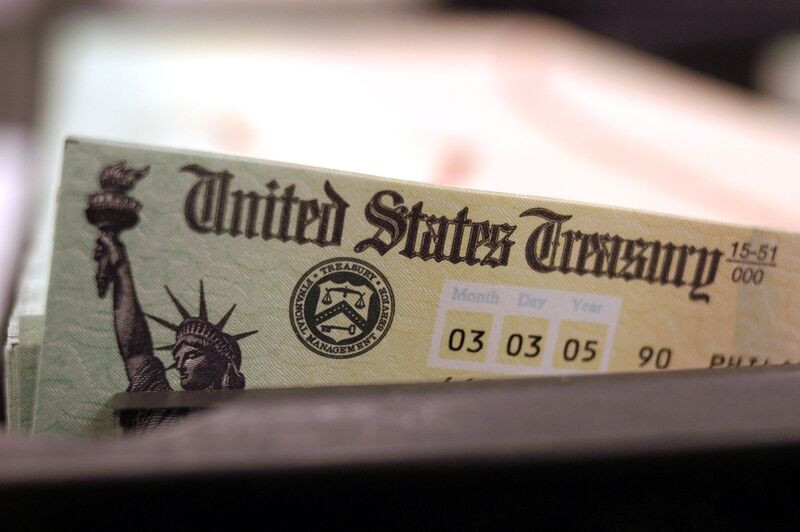
Although the level of stress in global markets is going through the roof, a significant decrease in the degree of tension in the foreseeable future is not expected.
Deutsche Bank's G7 currency volatility index jumped to a two-and-a-half-year high this week.
Above it all rises the mighty greenback that remains at the 20 year old peaks.
The combination of attractive US interest rates and the feeling of money security in USD-denominated assets is supporting the dollar.
America is relatively insulated from many of the upheavals wreaking havoc in other parts of the world, and the United States remains the least dirty shirt for many investors.
A risk-averse market environment amid rising geopolitical tensions and growing fears of a slowdown in the global economy is helping the defensive dollar outperform its major competitors.
As Citigroup strategists note, the markets are now very pessimistic, and the only asset that is traded "structurally" is the dollar.
By some measures, the US currency is now stronger than ever, while many of its peers are under huge pressure, trading near multi-year lows.
The pain caused by the rise in the USD reminds some experts of the mid-1980s, when currency chaos forced the world's top financial officials to band together and force a solution on the markets. However, the key difference is that the Plaza Accord deal was only struck after Fed Chairman Paul Volcker had already broken the back of inflation, while the outcome of the current battle is not yet a foregone conclusion.

"Right now, the only mandate that matters to the Fed is controlling inflation," said Stephen Roach, a senior fellow at Yale University.
In his opinion, mainly because of this single-mindedness, the world economy is heading for recession.
"This will certainly change inflationary pressures in the US – and may lead to some stabilization of the currency markets on the other hand – but in this case it puts the cart ahead of the horse," Roach said.
As long as what is happening in the world does not affect the American economy, the Federal Reserve can focus on its immediate task, experts believe.
"Fed officials are aware of the external consequences of what they are doing because the dollar is a global reserve currency, but they have internal powers and they are focused on that," said Paul McCully, former chief economist at PIMCO.
"It is unclear when such external effects can turn from noise into a signal for FOMC officials to finally stop, turn around and influence what they are doing. For now, the world will dance to the hawkish tune of the Fed and suffer from the "pain" that the head of the central bank Jerome Powell recently warned about," he added.
As politicians in Washington made it clear that they were abandoning the idea of coordinated currency interventions, officials from London to Beijing were forced to provide assistance to support their currencies through improvised solutions.
On Wednesday, the greenback updated the highs of 20 years ago, rising above 114.70 during the Asian session.
However, then the dollar loosened its grip after the Bank of England promised to do everything necessary to restore calm in the financial markets. The central bank announced that it will temporarily purchase long-term UK government bonds from September 28. The day before, it spent about £1 billion for these purposes.
The BoE's actions supported the pound and slightly softened the restless mood in the markets.
"It's all a bit confusing. It is unclear how long the fresh optimism will last. Firstly, this re-stimulation will raise, not suppress, inflation in the UK, and this is bad for bonds and the pound," ANZ economists said.
"Please note that nothing has fundamentally changed, except for the circuit breaker provided by BoE," DBS analysts said.
Nevertheless, the positive changes observed in market sentiment have put some pressure on the protective dollar. According to the results of Wednesday's trading session, the greenback decreased by about 1.5% relative to its main competitors.

The greenback also got a foothold from the fall in the yield of ten-year US government bonds. On Wednesday, the indicator fell to 3.789% from the previous closing level of 3.963%.
In addition, there was talk in the market that the Fed could follow in the footsteps of the BoE.
Piper Sandler believes that the BoE's decision to suspend the start of the previously announced program of selling government bonds and instead start buying bonds amid a sharp increase in their yields will not have immediate consequences for the Fed.
"We don't expect the Fed or other central banks to follow suit unless other sovereign markets stop functioning normally," they said.
So far, the tightening of monetary policy in the United States does not pose a threat of a debt crisis. In addition, the strong dollar partially compensates for the negative effect of the rate hike. However, the situation remains tolerable as long as the greenback retains the craving for growth. Problems may arise when risk sentiment fully returns to the markets. According to some estimates, this will happen towards the end of the year.
When financial markets calm down a bit, the decline in demand for the dollar may lead to a recovery of EUR/USD, economists at ABN Amro say. Their forecast for the pair at the end of 2022 is 1.00.
The weakening of the greenback's positions allowed the EUR/USD pair to strengthen on Wednesday. The day before, it rose more than 100 points and finished around 0.9735.
On Thursday, the greenback tried to reverse the pullback of the previous day, but met stiff resistance around 113.70 and retreated to 112.00.
The corrective decline in USD may last in the direction of 109.35 (weekly low from September 20) and 108.40 (55-day moving average).
As for the broader scenario, the prospects for the dollar's additional growth remain unchanged as long as it trades above the seven-month support line around 107.10.
On Thursday, market participants continued to assess the consequences of the BoE's unexpected decision, announced on Wednesday.
"The Bank of England has taken a rather decisive step. And this is positively perceived by the foreign exchange market," NatWest strategists said.
In addition, Reuters, citing informed sources, reported that the People's Bank of China has asked large state-owned banks to be ready to sell dollars for a local unit in offshore markets, as it intensifies efforts to contain the fall in the yuan.

The Chinese currency has lost more than 11% against the dollar this year.
The scale of this round of USD selling to protect the weakening yuan will be quite large, the sources said. The total volume of sales of the US currency has yet to be determined, since the movement of the yuan largely depends on the movement of the dollar and the trajectory of the Fed's tightening policy, they added.
The focus was also on inflation in Germany, which jumped to 10.9% this month, which exceeded the expected 10%. This suggests that the overall figure for the eurozone, which will be published on Friday, is also likely to exceed the projected 9.6%, strengthening the arguments in favor of raising rates by another 75 basis points at the next ECB meeting.
However, some analysts believe that the ECB's potential actions are likely only a short-term stimulus for the euro.
"We would not want to own the euro simply because the ECB is raising rates. We would like to own the euro when the US dollar reaches a high, and when it becomes clear that inflation in the eurozone is slowing down, and when it becomes clear that the currency bloc has avoided a large-scale recession," BMO analysts noted.
The growth of the European economy may slow down in the coming months due to the relative weakness of the euro against the world's leading currencies, as well as the high level of inflation in the EU, the head of the World Bank David Malpass said on Thursday.
TD Securities strategists believe that in the near future it is difficult to expect a favorable change in fundamental factors in favor of the euro. They expect the EUR/USD pair to decline to the level of 0.9200 by the end of the year.
"We do not think that the problems of the euro are over, and we decided to lower the forecast for the coming months once again. The biggest factor is related to the feedback between the ongoing shock from the terms of trade and growth prospects. The ECB helped mitigate the negative effects, but the euro remains a shock absorber for these protracted shocks. Our estimates of growth factors at the global level and in the eurozone indicate that the EUR/USD pair will now aim for 0.9200," they said.
On Thursday, the greenback was under pressure for the second consecutive day, which the main currency pair did not fail to take advantage of. It added about 0.7% to the achievements of the previous day.
While the pair is above the 0.9750 level, further growth is likely. The positive tone will be weakened if EUR/USD falls below 0.9640 (20-day moving average). The next obstacle to growth is the 0.9800-9805 area, followed by a stronger barrier around 0.9880.
 English
English 
 Русский
Русский Bahasa Indonesia
Bahasa Indonesia Bahasa Malay
Bahasa Malay ไทย
ไทย Español
Español Deutsch
Deutsch Български
Български Français
Français Tiếng Việt
Tiếng Việt 中文
中文 বাংলা
বাংলা हिन्दी
हिन्दी Čeština
Čeština Українська
Українська Română
Română

